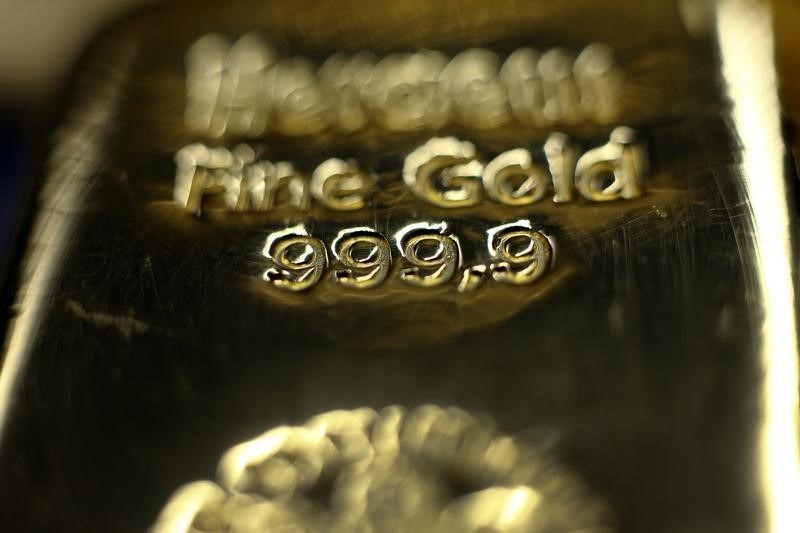Investing.com’s stocks of the week
By Geoffrey Smith
Investing.com -- Gold prices reversed early gains on Friday, despite a miserable U.S. labor market report that strengthened expectations of lower-for-longer interest rates.
Fed funds futures on Thursday started to imply a U.S. policy target rate below zero for the first time ever, something that would strengthen the bull case for gold by wiping out nominal returns on short-term U.S. government debt, the world’s most liquid haven asset.
Yields on Treasuries out to five years stayed at or near record lows on Friday, unmoved greatly either by the news that 20.5 million Americans lost their jobs last month, or by the sound of happy talk after a telephone call between U.S. and Chinese trade negotiators (President Donald Trump later told Fox that he still has “trouble” with the Chinese trade issue).
“Social distancing, consumer angst, travel restrictions and the legacy of up to 40 million jobs lost mean there is zero prospect of a V-shaped recovery,” ING analysts said in a note to clients.
By 11 AM ET (1500 GMT), gold futures for delivery on the Comex exchange were down 0.2% at $1,722.20 an ounce, while spot gold was down 0.1% at $1,715.79.
Silver futures rose 2.0% to $15.90 an ounce, a new two-month high, while platinum futures rose 1.7% to $795.50.
However, the most conspicuous mover was copper, which gained 1.2% to over $2.41 a pound, its highest in nearly two months. Copper prices have historically been a solid proxy for global industrial activity, suggesting that its 10% rally from the March lows could at least herald a bottom for the world economy.
Ulrich Stephan, a strategist with Deutsche Bank (DE:DBKGn), argued in a morning note that silver, too, has potential for outperformance in the near term, given that over 60% of final demand for the metal is industrial, and given that the ratio of gold and silver prices, at around 109, is still well above its historical range of between 60 and 80 to 1.
In Europe, meanwhile, the war of words between Germany and the EU over the European Central Bank’s bond-buying policy rattled on. The Court of Justice of the European Union said in a statement that it alone could decide on whether an EU institution had acted beyond its competence.
That was a rebuke to Germany’s top court which had claimed that right for itself earlier in the week, in an episode that threatened to restrict Europe’s policy response to the pandemic. Eurozone sovereign spreads tightened the most in a week in response.
